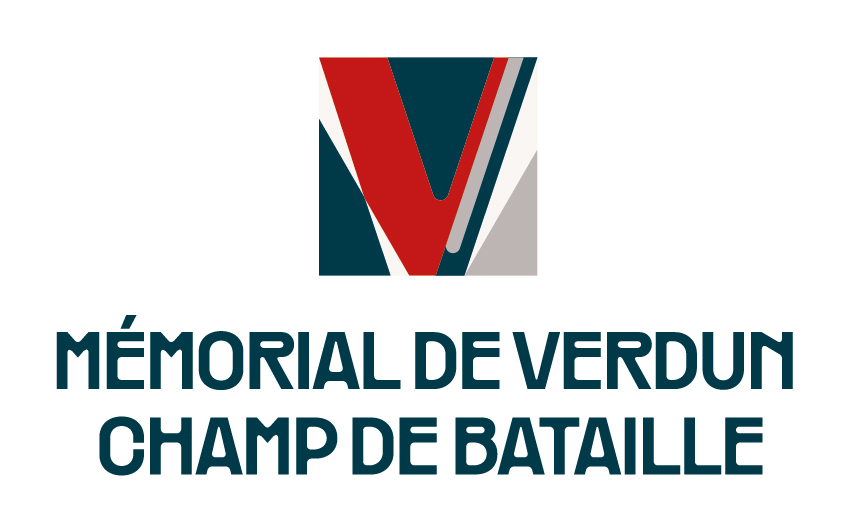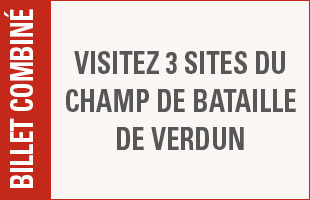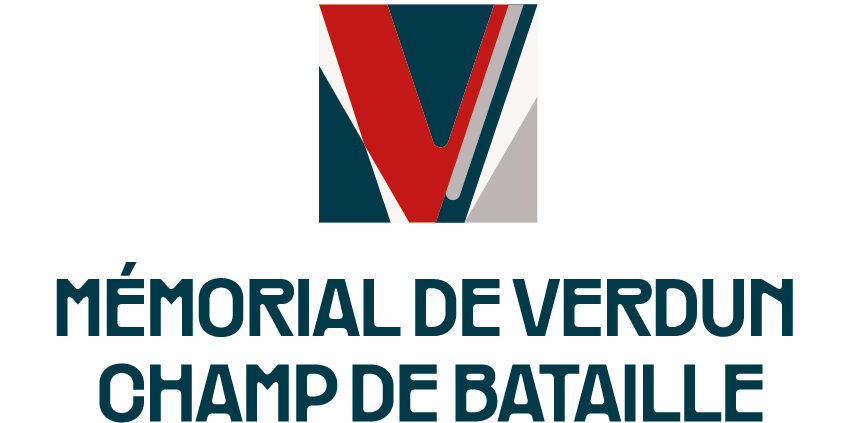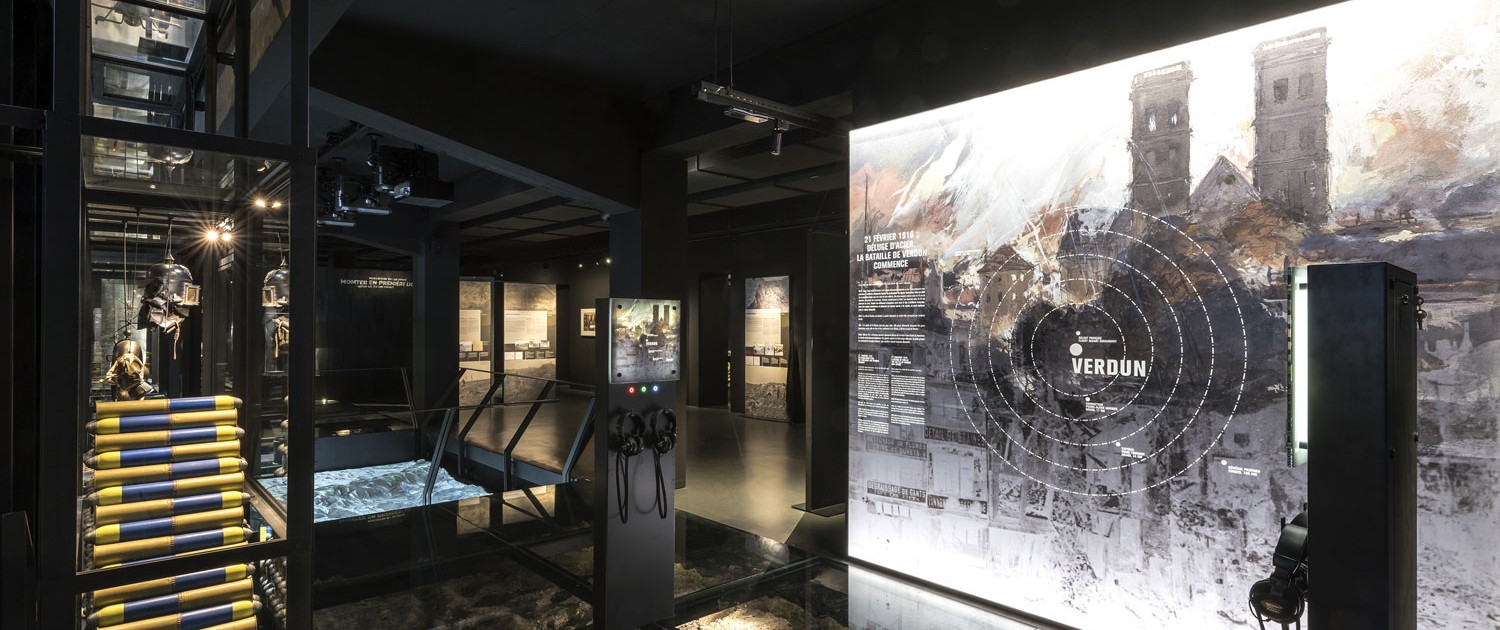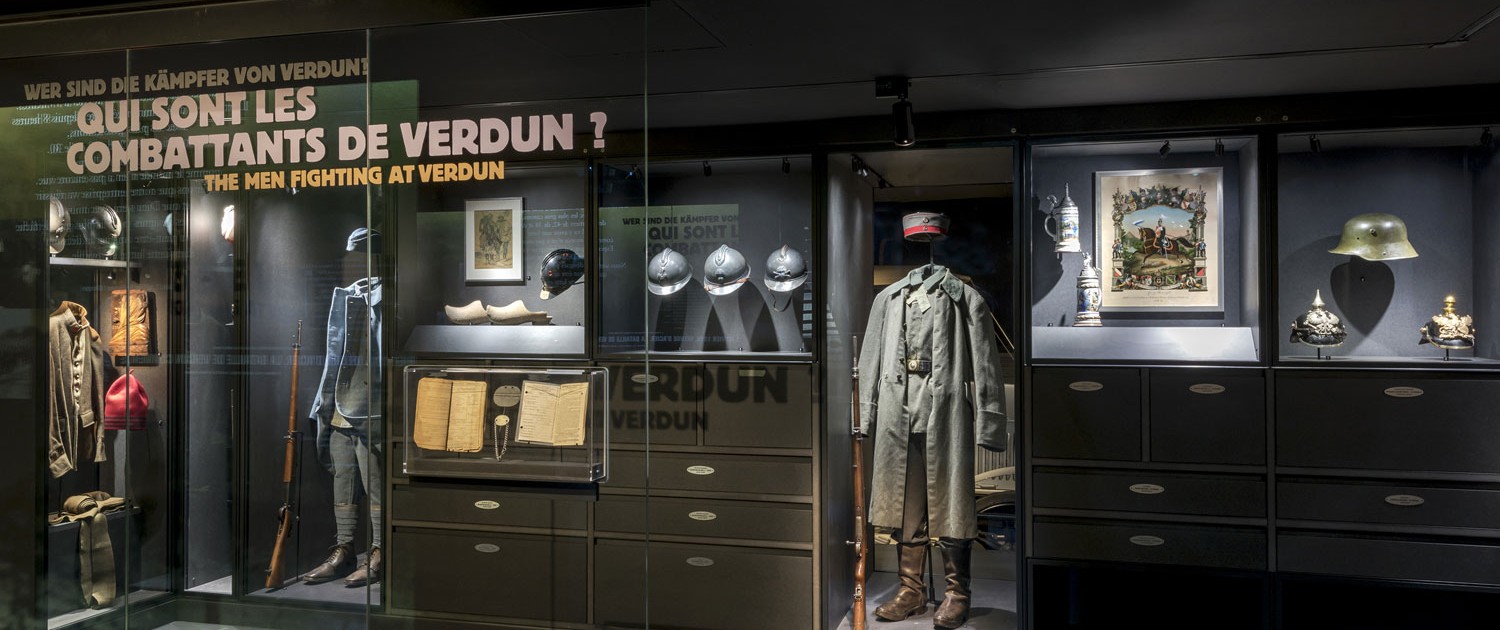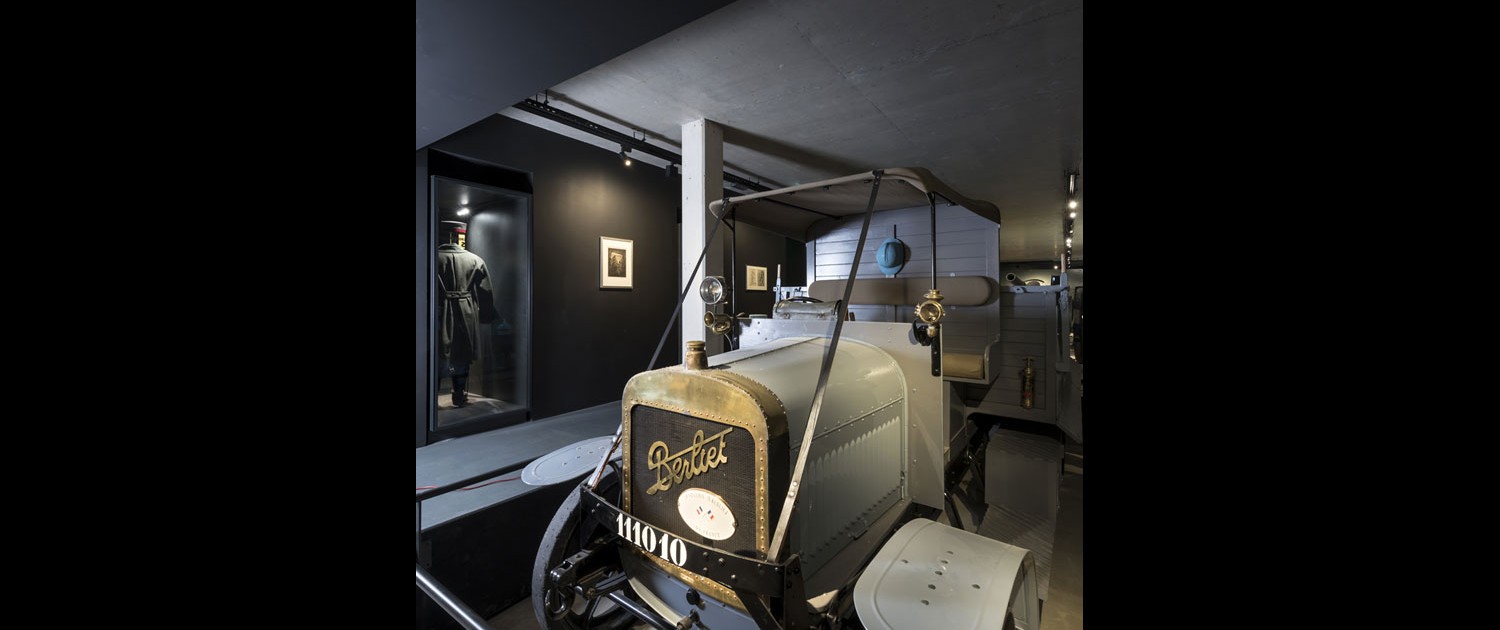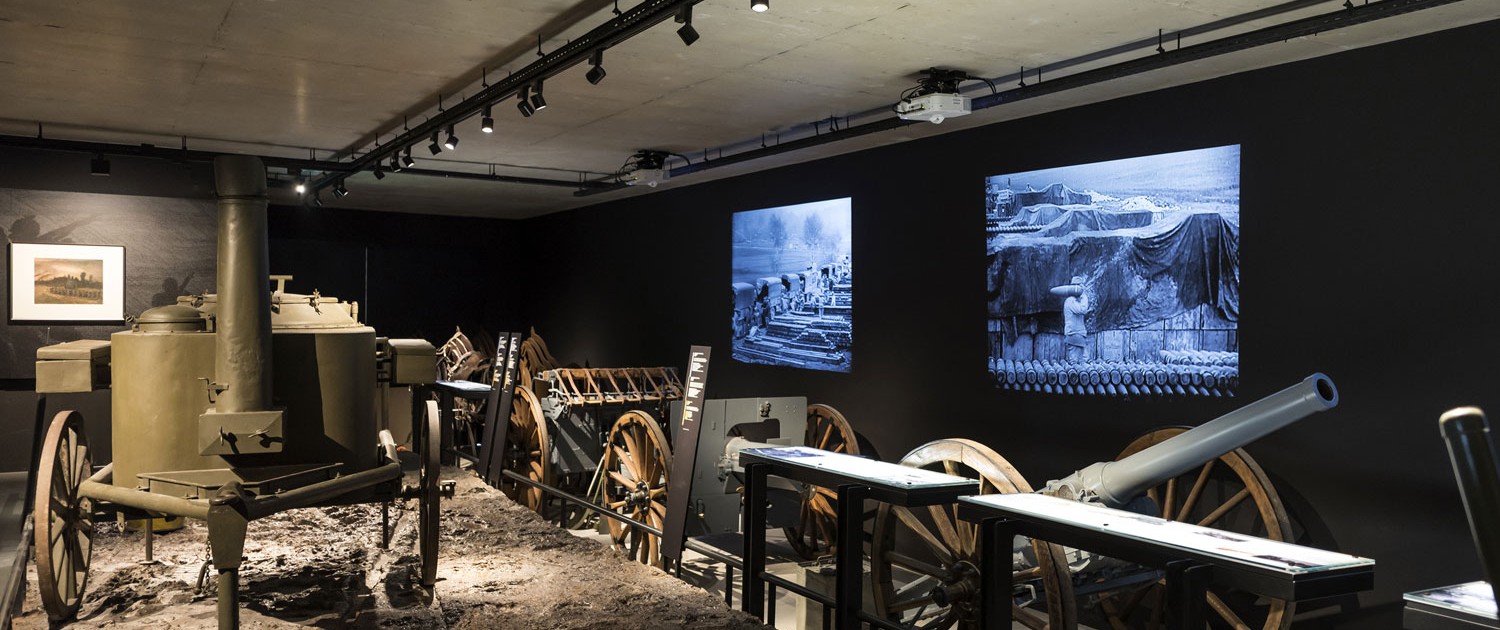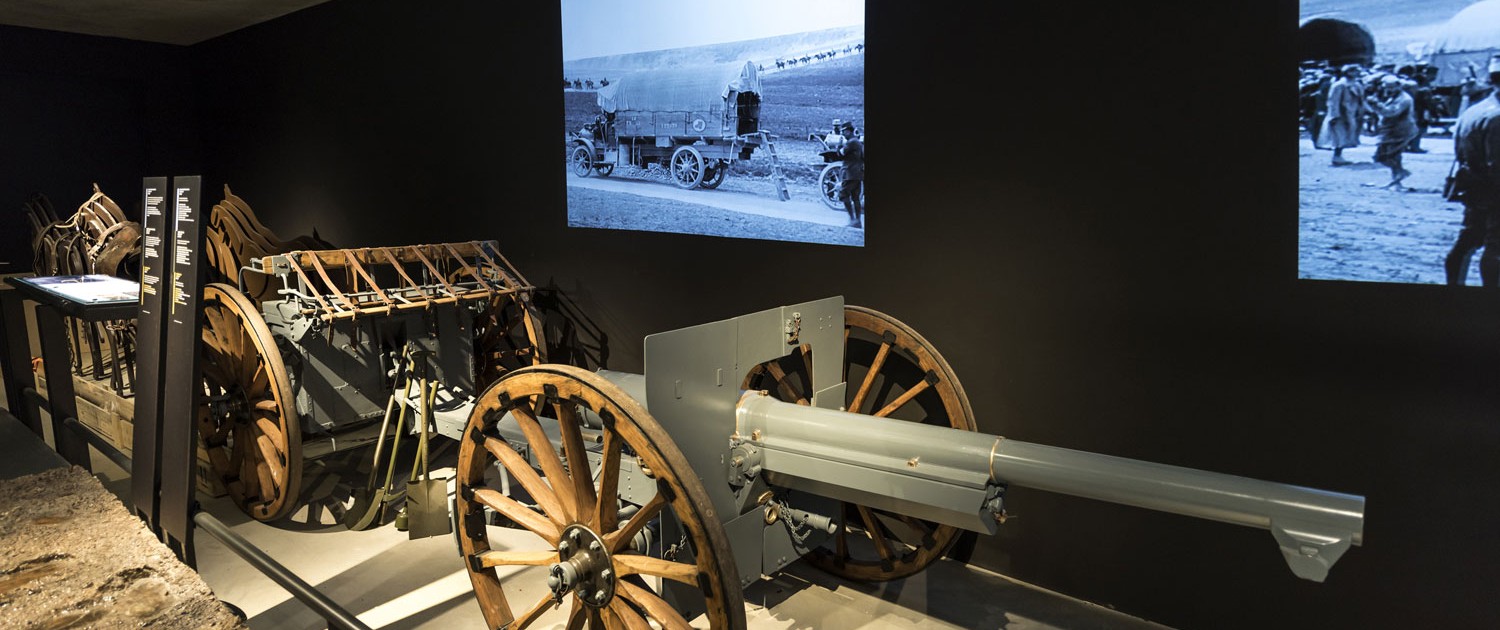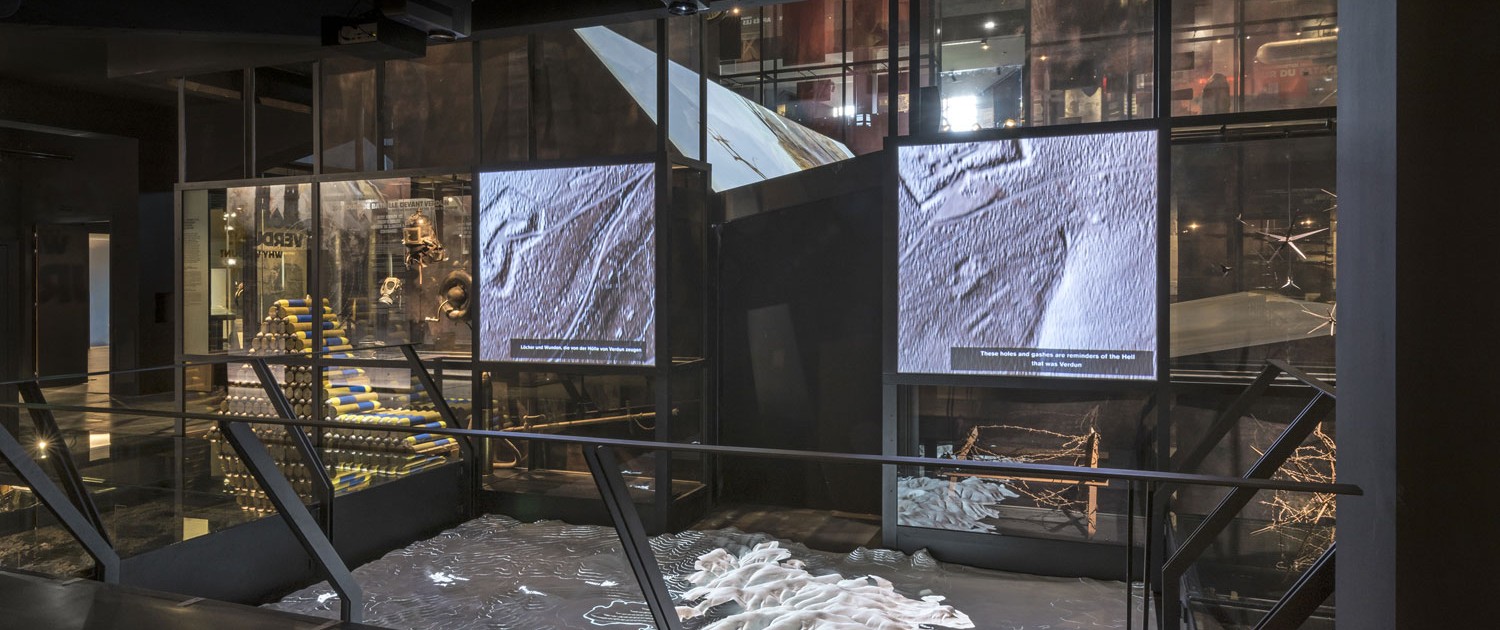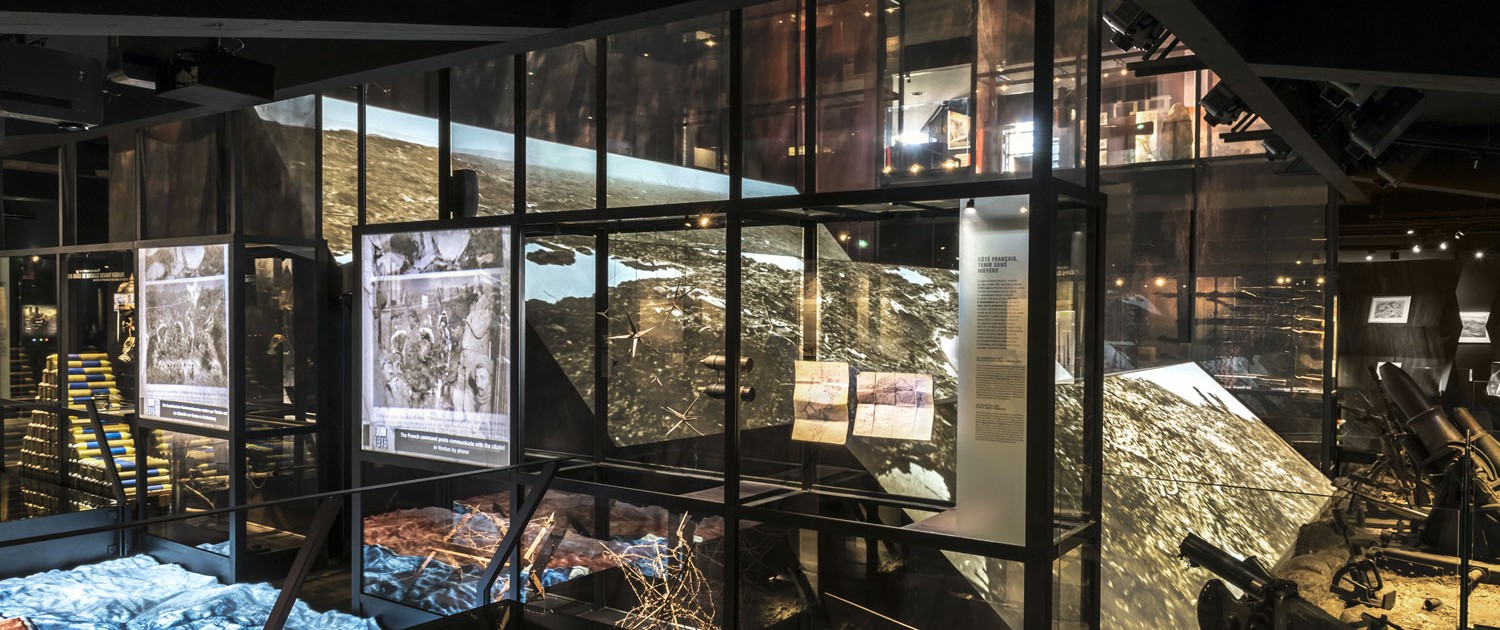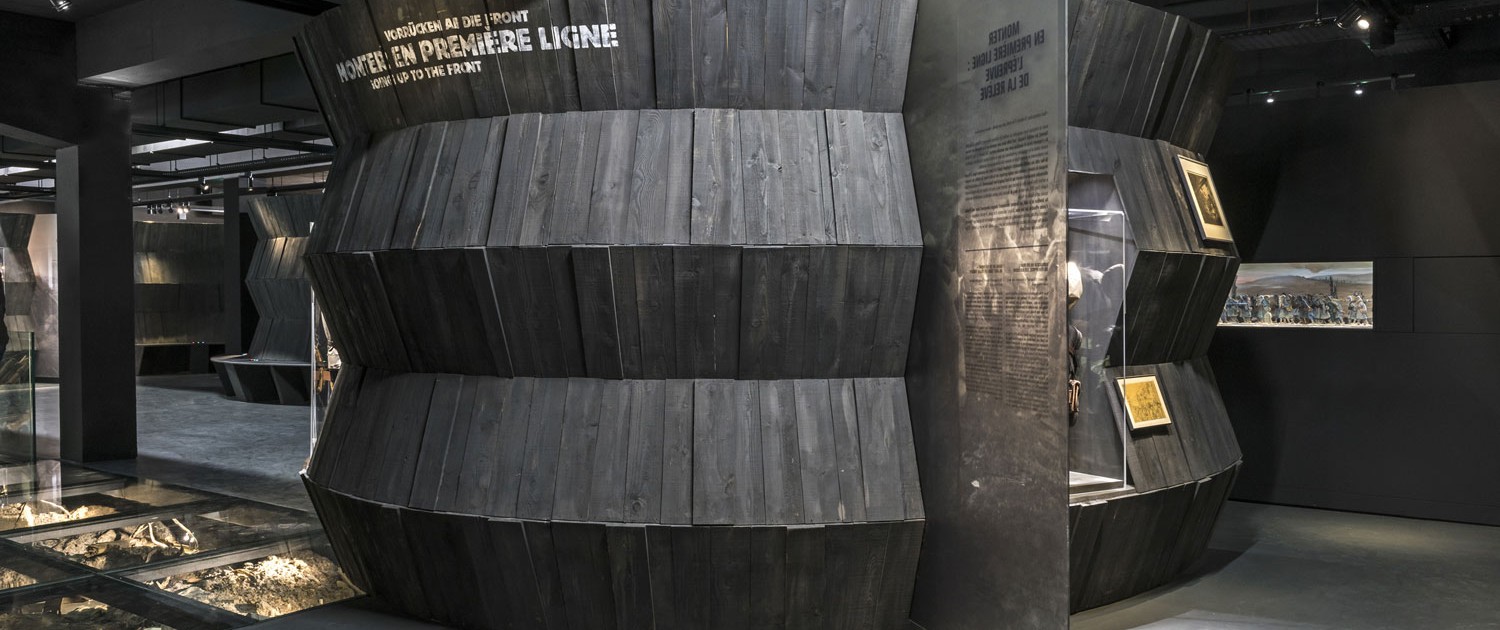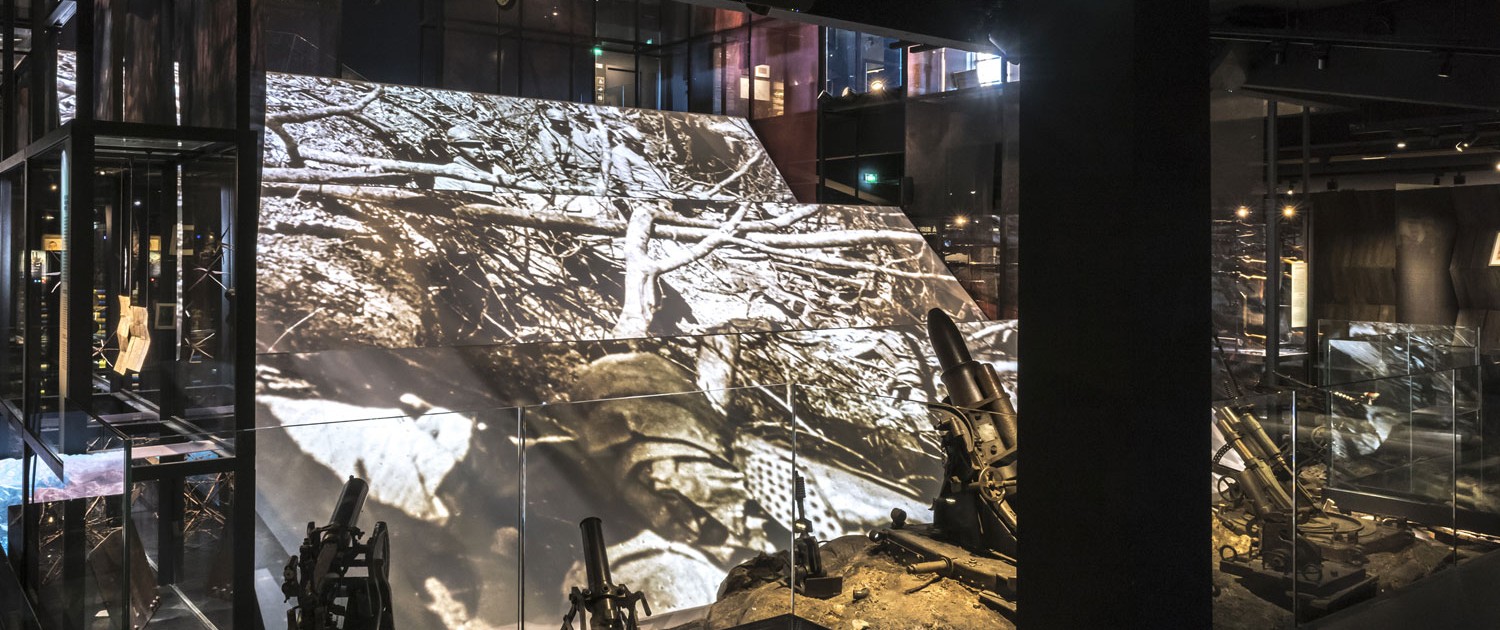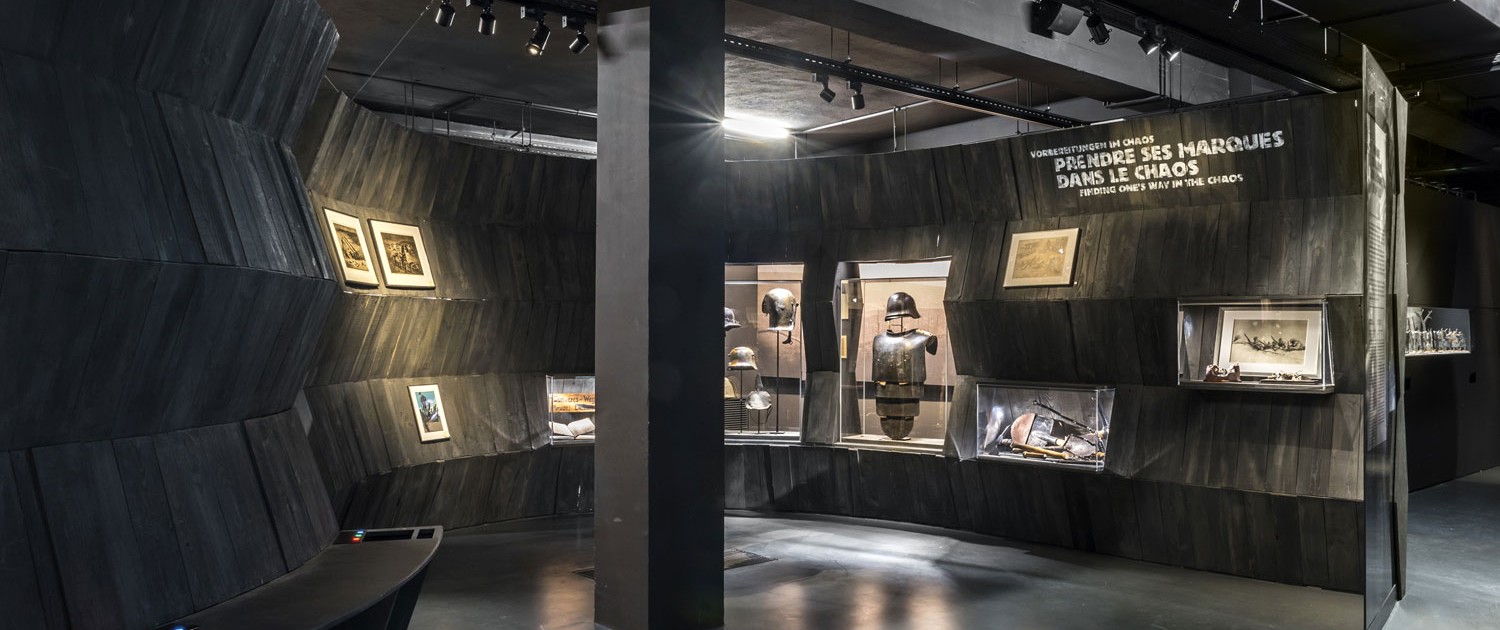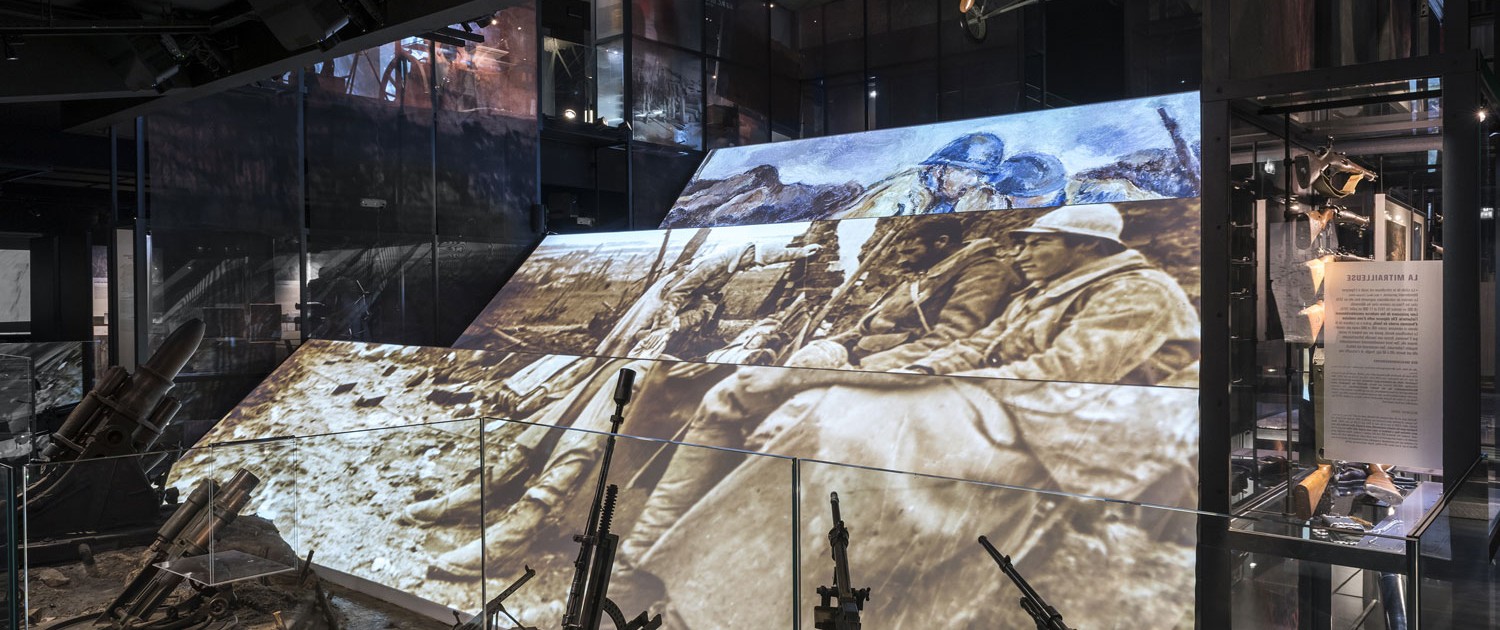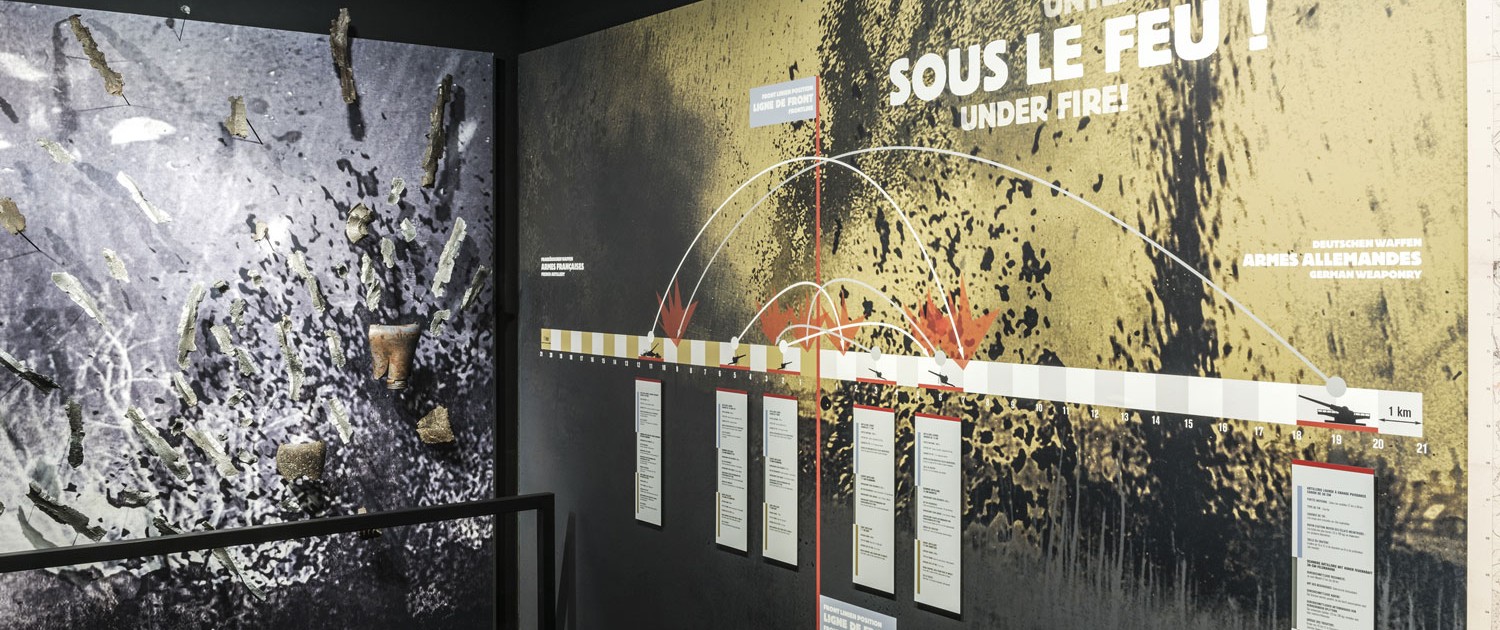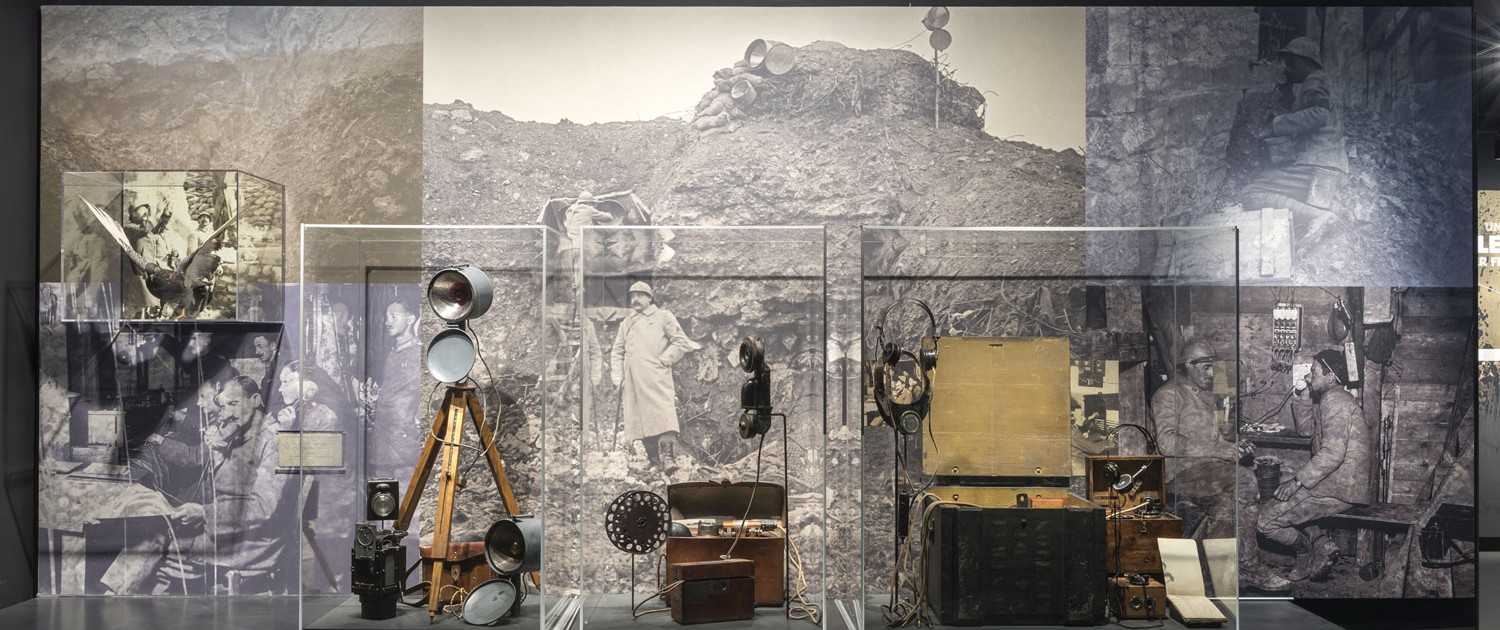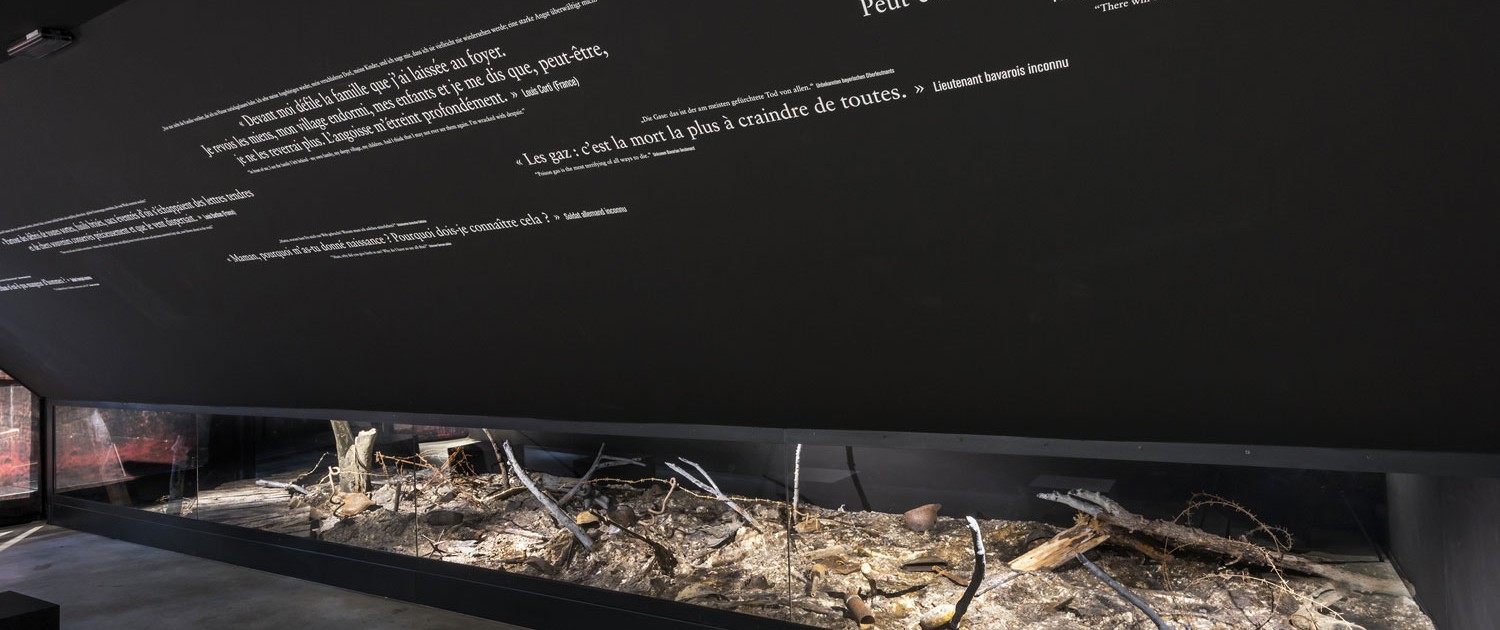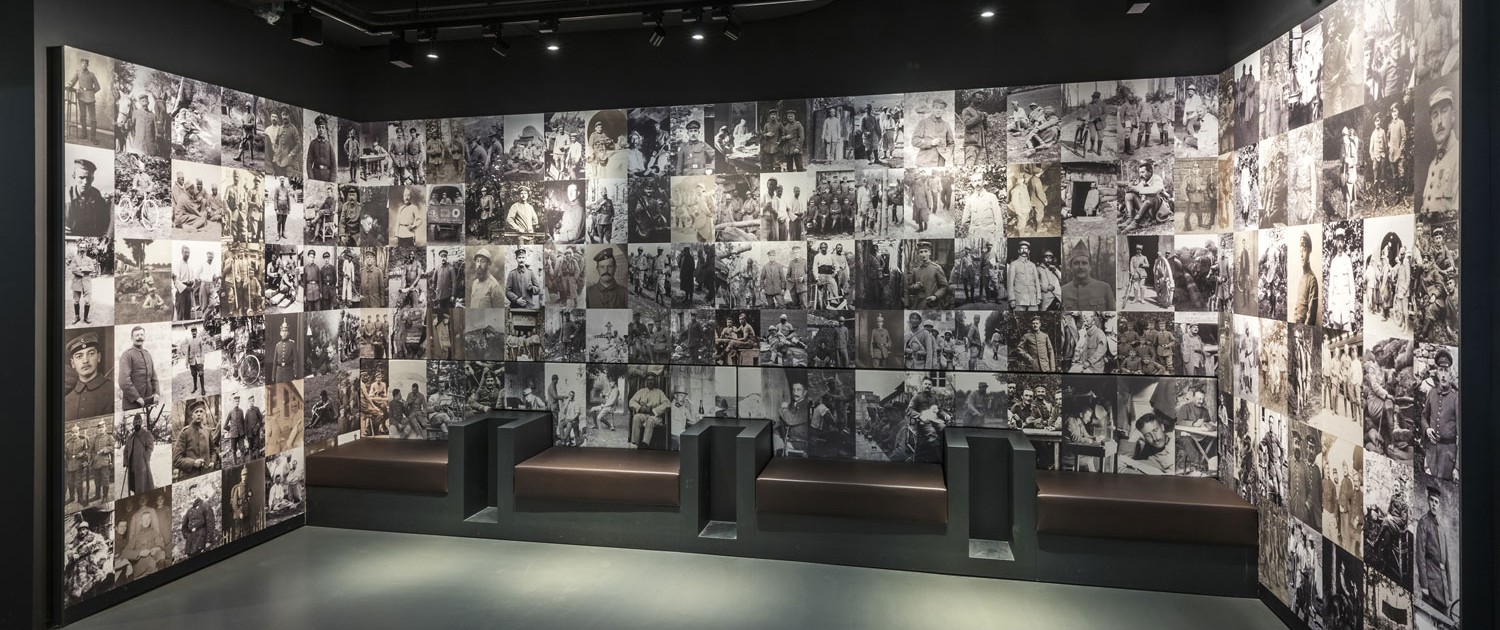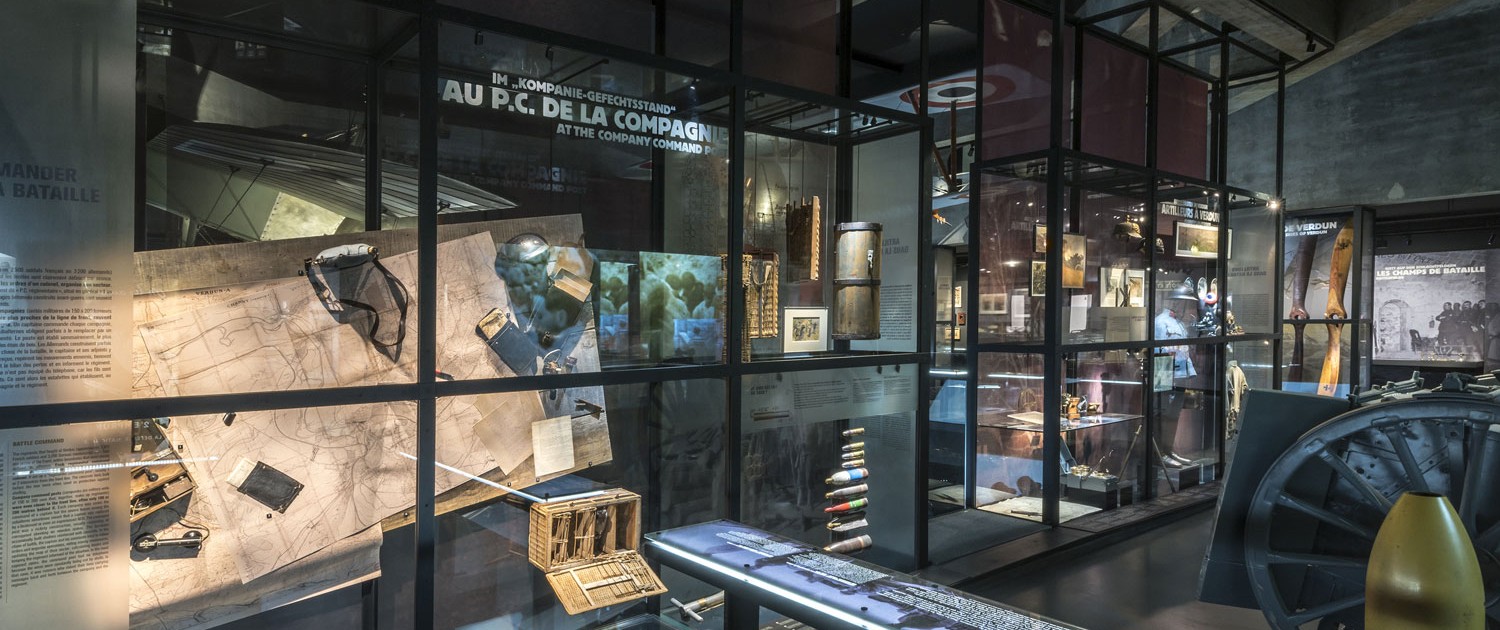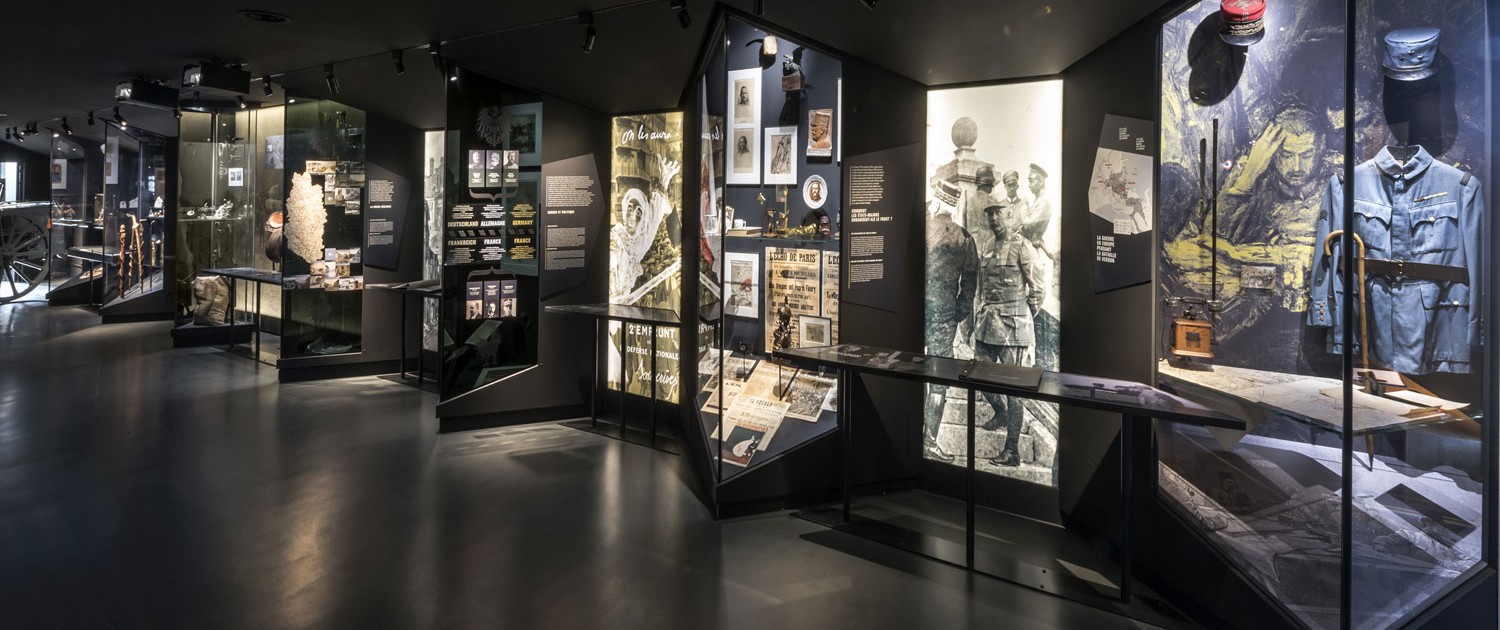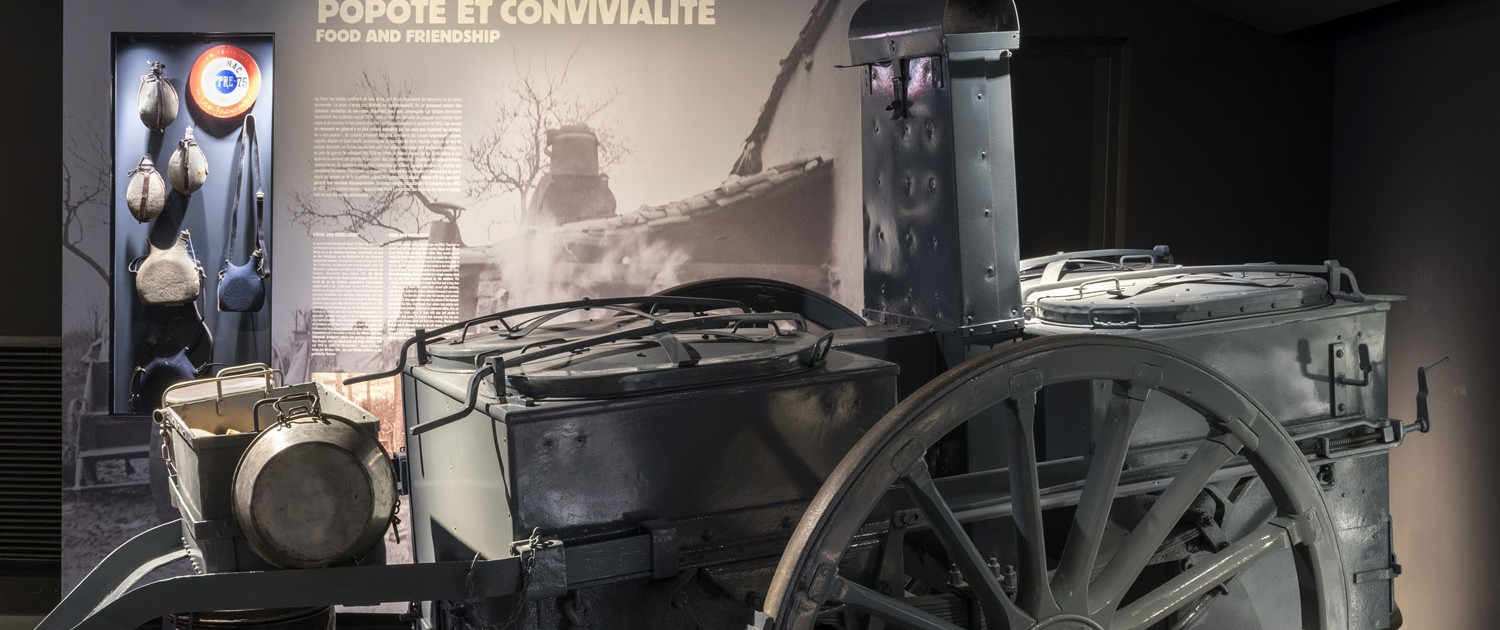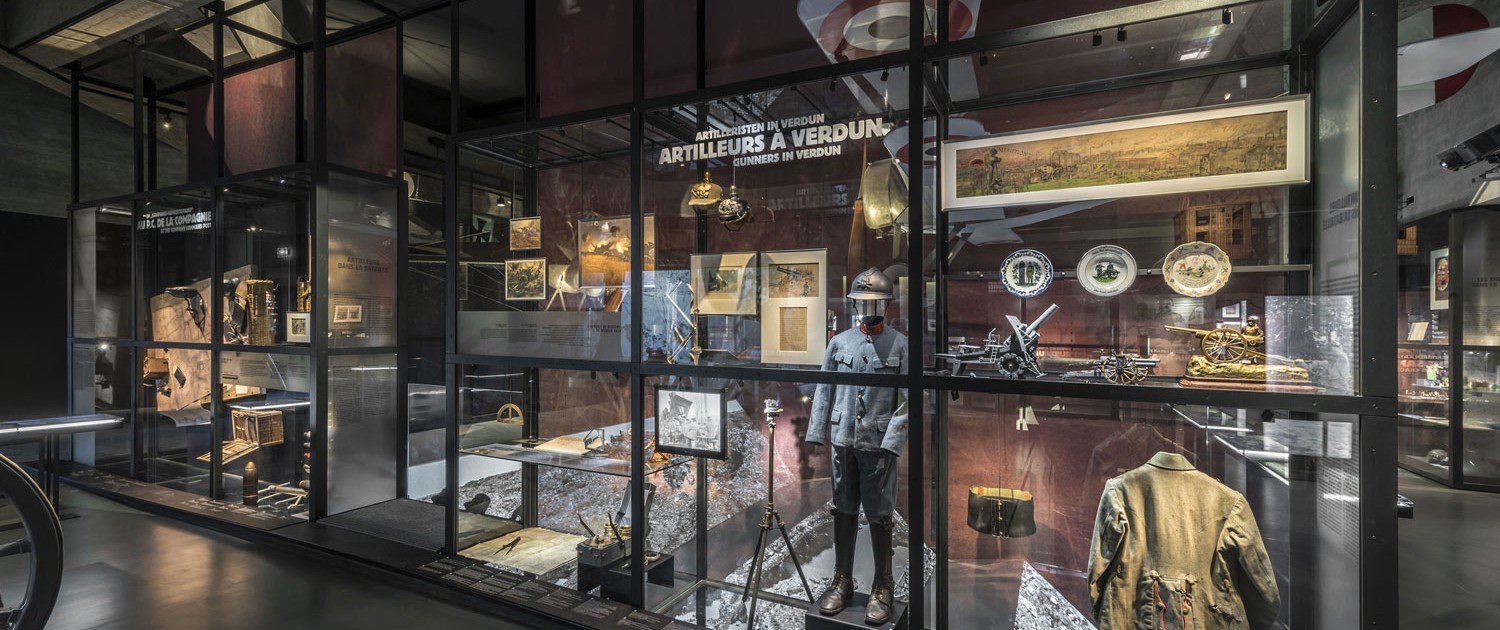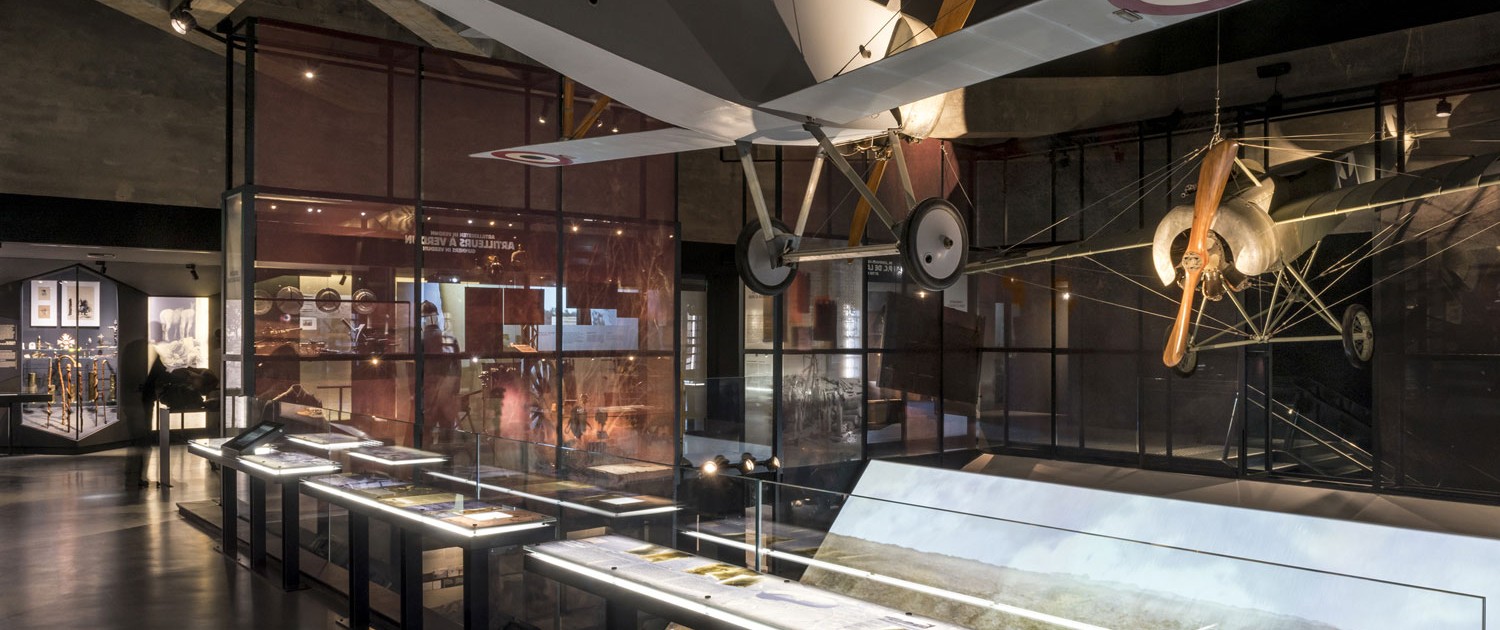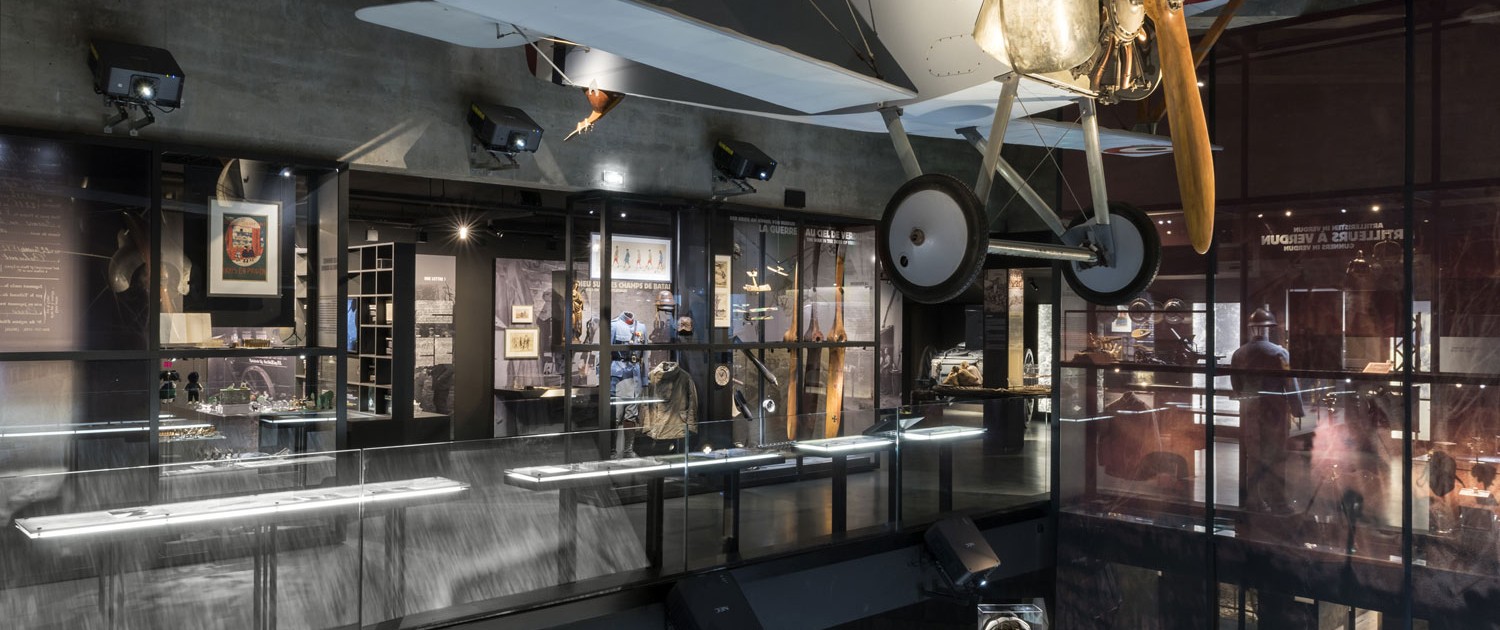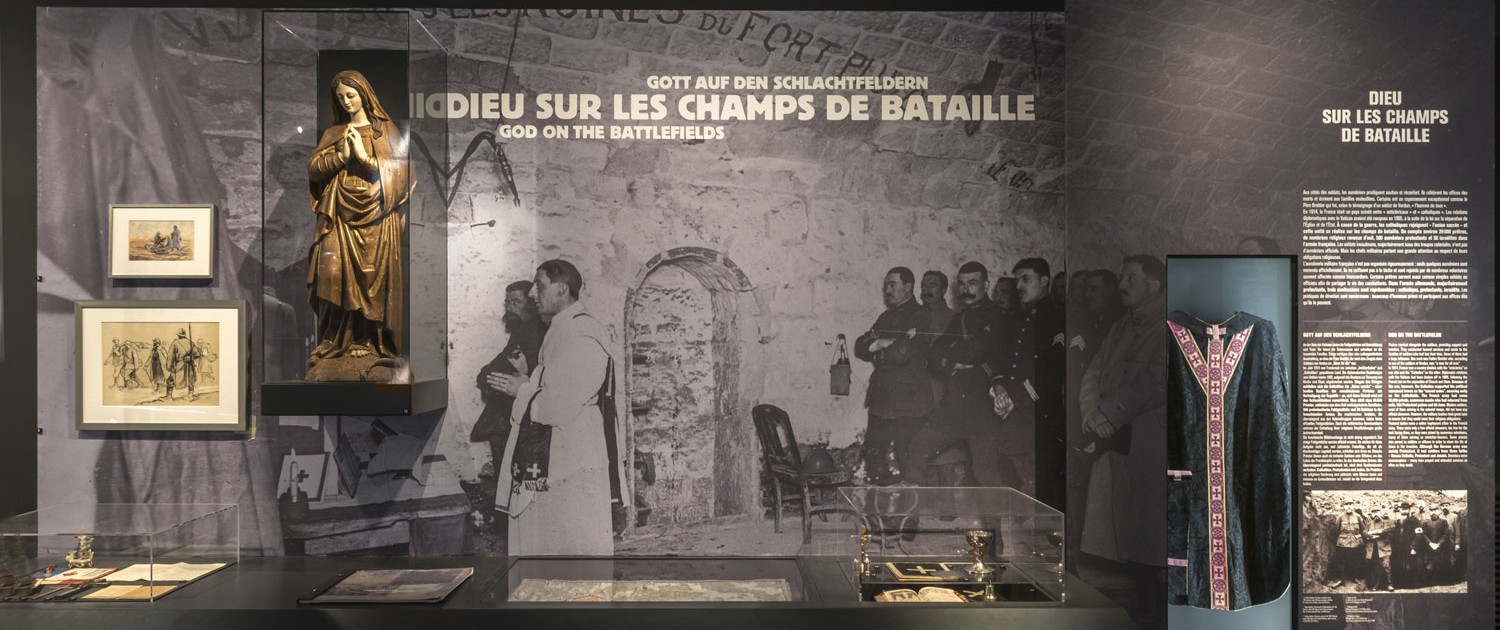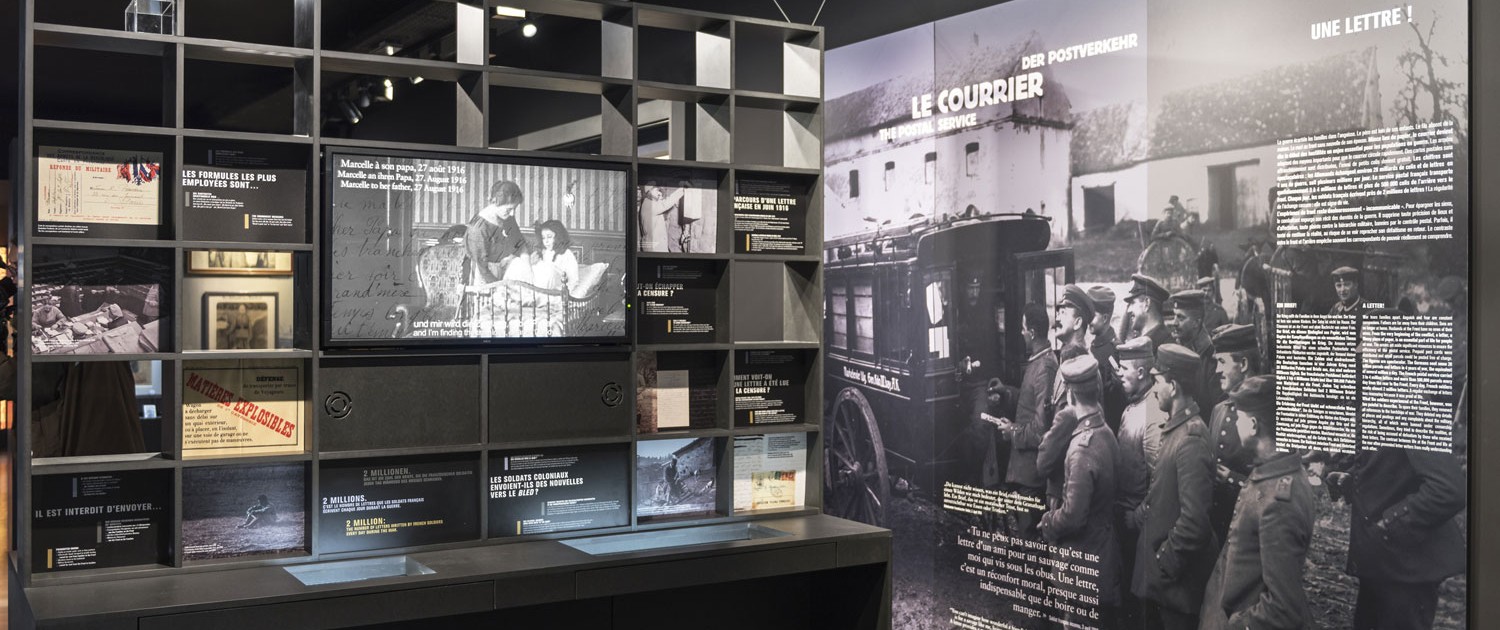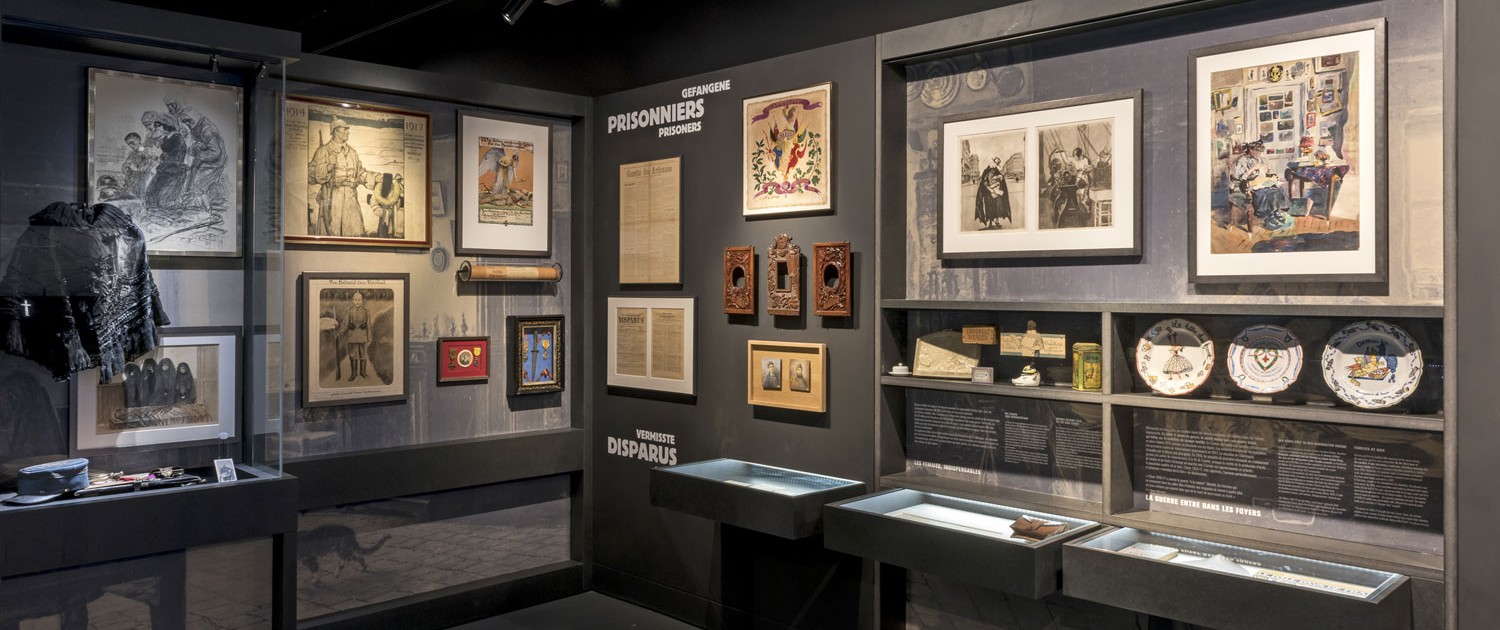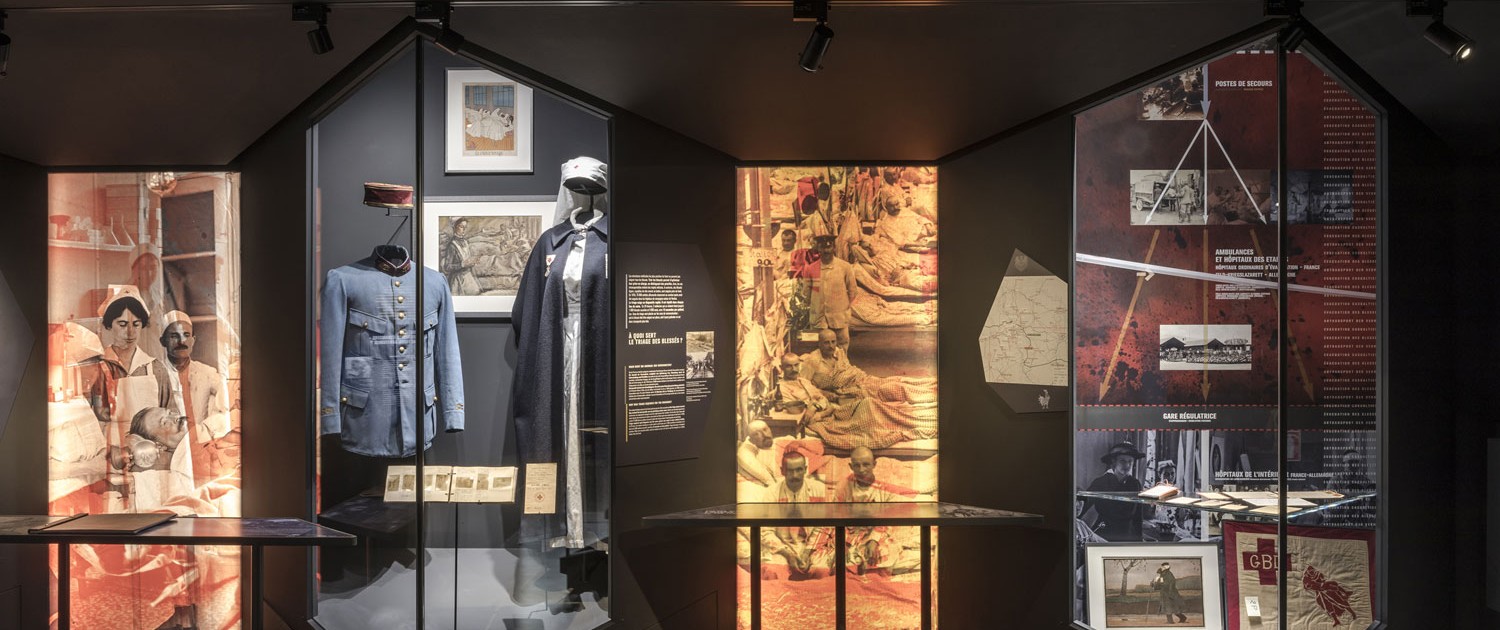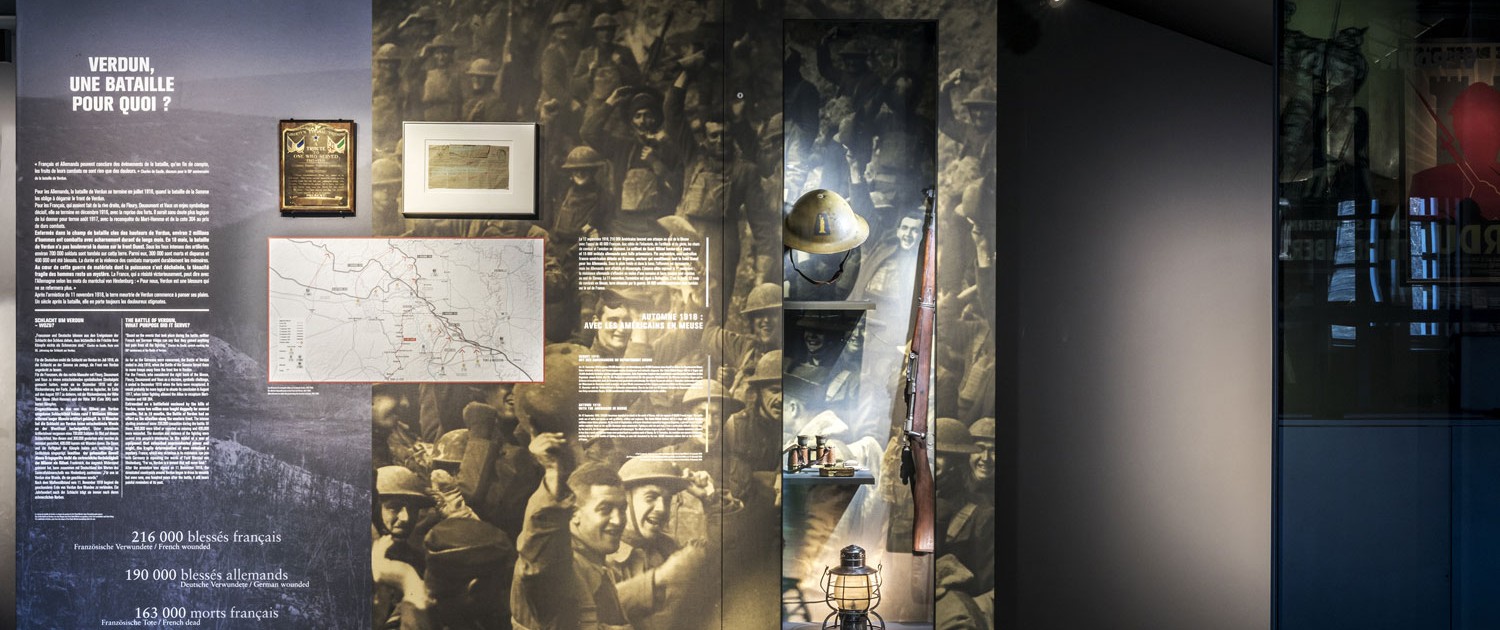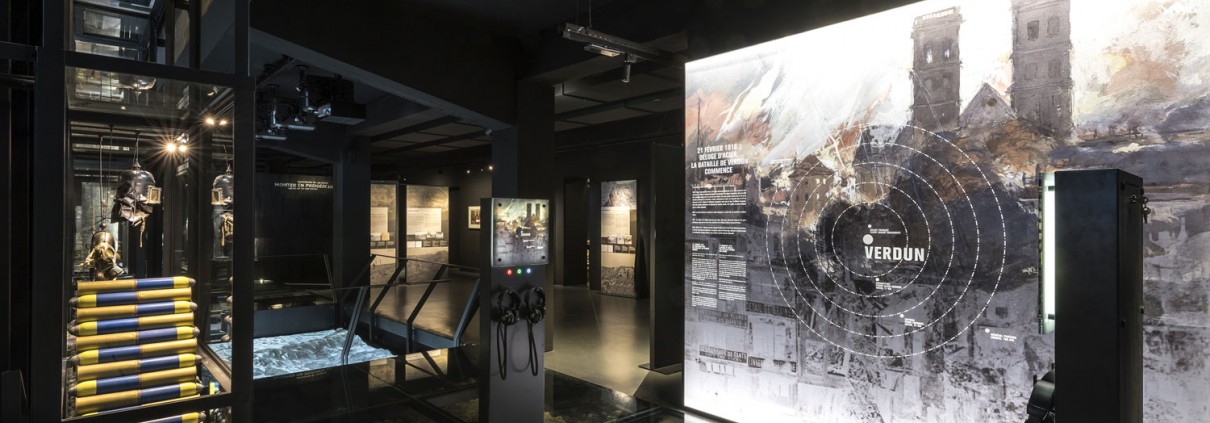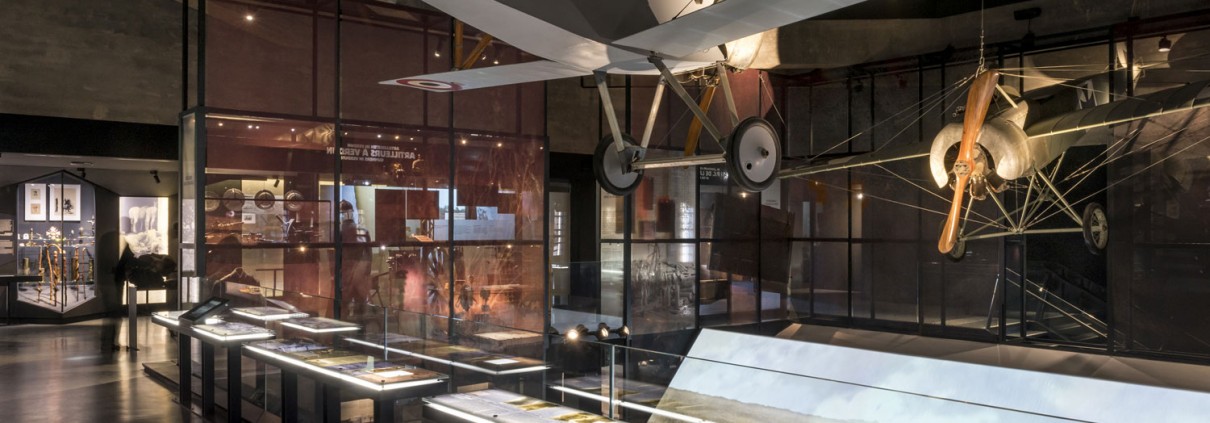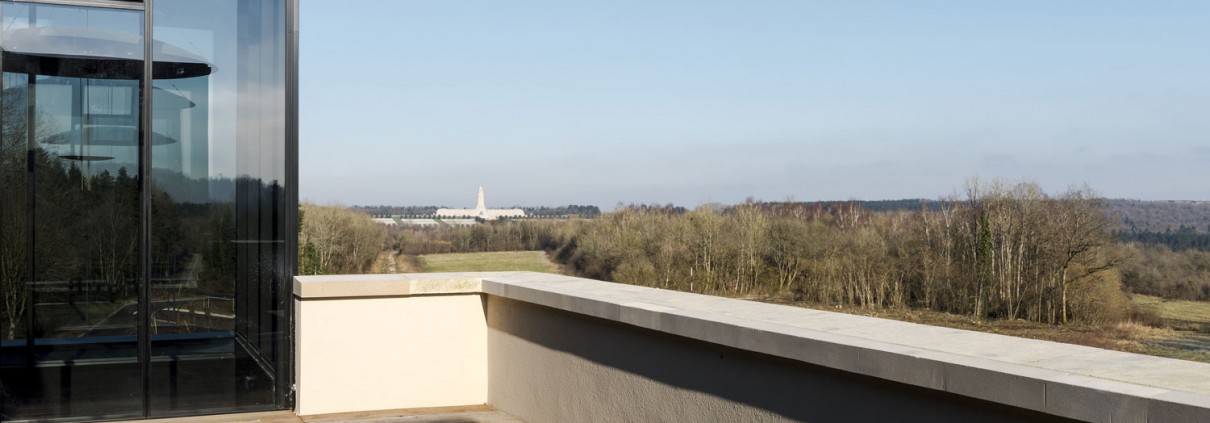 https://memorial-verdun.fr/wp-content/uploads/2016/04/Memorial-Verdun-parcours-rdc-1.jpg
990
1500
leila
https://memorial-verdun.fr/wp-content/uploads/2024/01/Memorial-LOGO-couleur-850x423.jpg
leila2015-11-02 01:10:522017-04-26 09:37:111. The first day of the battle
https://memorial-verdun.fr/wp-content/uploads/2016/04/Memorial-Verdun-parcours-rdc-1.jpg
990
1500
leila
https://memorial-verdun.fr/wp-content/uploads/2024/01/Memorial-LOGO-couleur-850x423.jpg
leila2015-11-02 01:10:522017-04-26 09:37:111. The first day of the battleThe visitor trail in the new Memorial, translated into English and German, leads right into the heart of the battlefield. Allow at least 90 minutes for the visit.
The ground floor focuses on the experiences of soldiers fighting on the front line. On the first floor, visitors are shown the battlefield environment and background details on countries at war. The actual battlefield can be seen from the terraces on the top floor. Traces of the battle are still visible in the surrounding countryside.
Ground floor
In line with the ideas put forward by the founders of the Memorial, the replica of the 1916 battlefield remains the central feature of the visit. It is set within a glass cage and there is a video wall covering an area of 100 sq. metres. A unique audiovisual presentation recreates the violence of the battle and shows the tremors and contortions of ground constantly pounded by shellfire. It combines archival images and artwork by the soldiers. To each side are the humble, fragile everyday objects used by the men, set out in bare wooden display cases, giving visitors a different view of the battle, at eye level.
Further on, the trucks and guns on the mock-up of the Sacred Way are a reminder of the logistics of the gigantic battle, displayed against a background of engine noise and archival images. At the end of this floor, visitors enter an enclosed space beneath the battlefield screens which gives some idea of the claustrophobic surroundings of soldiers crouching in shell holes on the front line of the battle.
First floor
Here, visitors discover the battlefield environment. Who was in command of the battle? What was life like for French and German troops in the rear echelons? What role did aviation play in the first aerial battle in history? Visitors are also given an insight into soldiers on leave. The last part of the visit reveals the heroic work undertaken by the medical corps before returning to the original foyer and information on the history of the Memorial itself.
The terrace
View of the top floor of the Memorial: temporary exhibition hall. 3D image: Agence Brochet Lajus Pueyo.
The top floor is flooded with light and it opens onto the countryside surrounding the museum. Visitors can access the terraces and see the panoramic view. Multimedia terminals describe the battlefield through contemporary aerial photographs that reveal traces of the war, now hidden deep within the forest. The temporary exhibition hall is also on this floor, as is the museum’s Documentation Centre.
